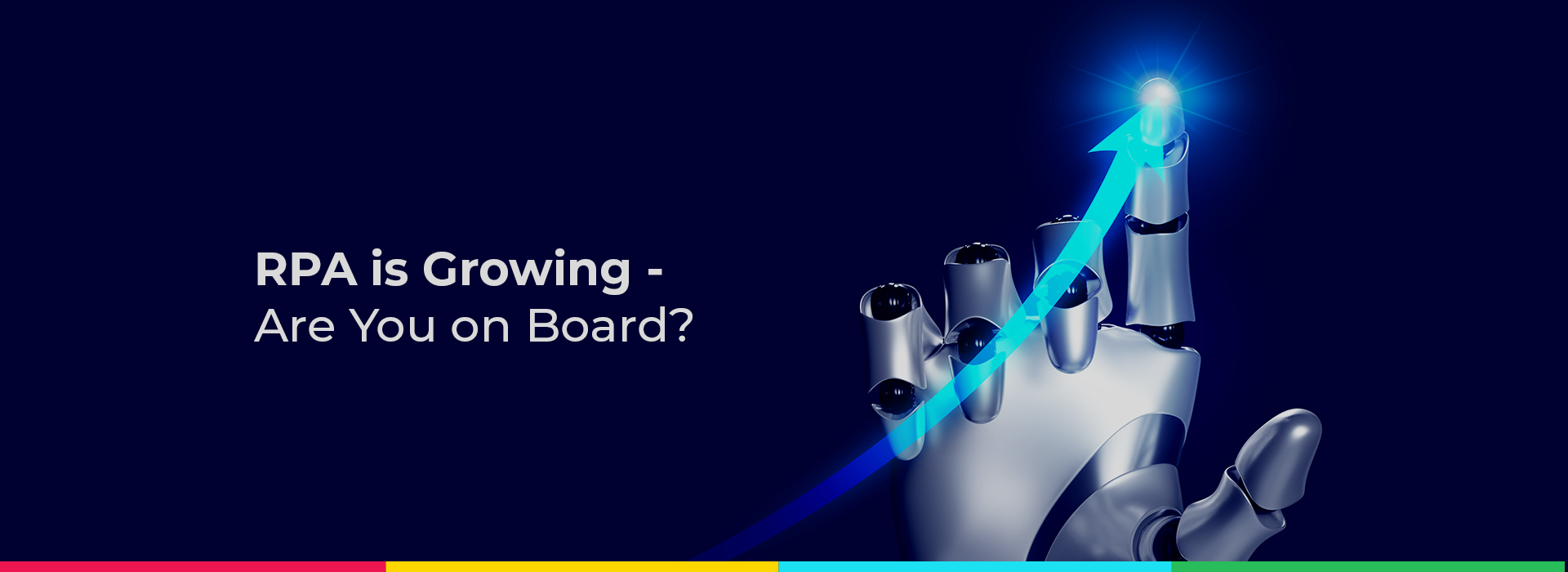
Blog
How RPA Can Be Used in Finance, Banking, and Accounting
When people think of the financial services industry, they may think of high-power financial executives making multi-billion-dollar deals with other international tycoons. While that certainly does happen, the real day-to-day of the financial services industry is far less glamorous and revolves around many routine, repetitive and often manual processes. These processes include entering and tracking accounts payable and accounts receivable, completing monthly and quarterly reconciliations, processing invoices, managing tax accounting and other similar tasks.
While these processes do involve some critical thinking and people skills – for example, working with customers to resolve past-due accounts receivable – much of the work involves data entry and other tasks that are repetitive and prone to human error and “fat fingering”.
Robotic process automation, or “RPA,” is an increasingly popular and steadily advancing answer to the challenge of streamlining such tasks to both reduce the potential for human error and free up human staff for more engaging and challenging work.
Benefits of RPA in Finance, Banking, and Accounting
RPA is a perfect solution for reducing the labor-intensity of an organization’s financial services processes.
Speed and Volume
An experienced financial services professional can get pretty efficient at inputting data, processing invoices, doing the monthly close-out, etc.; but they would struggle to keep pace with a virtual robot tasked with the same responsibilities. Virtual robots leverage computing power that humans simply don’t possess. Moreover, computing infrastructure concepts like virtualization can transform a single machine into multiple virtual robots, adding further leverage to RPA processes.
Moreover, while human workers spend eight hours per day in the office, five days per week – minus holidays, vacation and sick time – virtual robots can work around the clock, adding to their volume advantage over humans.
Reduction of Human Error
Even the most diligent, detail-oriented human is prone to making mistakes when performing the same task thousands and thousands of times. Statistically, humans are simply more likely to make an error than a virtual machine performing the same repetitive tasks. In the financial services industry, human error can be particularly costly. Just ask Norwegian financial services group Storebrand, which lost 14 percent of its share value a couple of years ago as a result of a fat finger human error.
Freed Up Time for Human Staff
While RPA might be less error-prone than humans when performing certain repetitive, data-driven tasks, it isn’t going to be able to replace a human for the more complex tasks like calling a customer late on a payment or negotiating non-standard payment terms with a vendor. The less time humans have to spend on tedious, relatively low-value tasks, the more time they have available to focus on activities that require a human touch.
Given these many benefits, it should come as no surprise that there are many RPA use cases in finance and accounting as well as exciting examples of robotic process automation in banking.
RPA Use Cases in Finance
There is a wealth of RPA case studies in finance. RPA can help to automate periodic reporting. Compiling profit and loss reports and other financial statements is a necessary process. Not only do these reports provide valuable information to potential investors, certain reports are required for publicly traded American companies. Accuracy is critical in compiling these reports; however, putting them together can be extremely tedious and time-consuming. This makes them a perfect use case for RPA in the world of finance. Given the regulatory risks of inaccurate reporting, it may make sense to have a human review the results of an RPA-generated report.
RPA Use Cases in Accounting
Accounting processes often involve verifying the same numbers are tied to the same accounts and line items across multiple systems. Among the many RPA accounting use cases is the ability of RPA to streamline that comparison. It also has the ability to easily interface between multiple computer-based systems through tools like APIs, allowing machine to talk to machine with less need for translating computer language to something readily digestible by a human.
RPA Use Cases in Banking
Robotic process automation use cases in banking include RPA bank reconciliation, and RPA used to automate statement reconciliation. Another of the many examples of RPA in banking is the credit approval process. In the world of banking, a great deal of time is spent determining whether or not to extend credit to applicants. While there may be some room for human discretion, decisions are generally based on objective criteria, such as income and credit score. RPA in banks can be used to automate that review and approval process.
RPA Use Cases in Asset Management
Given a set of objective criteria and a method of comparison provided by a human, RPA can be used to quickly churn through a variety of potential investment options for managed assets across a variety of investment categories.
If you are a financial services professional and want to learn more about how RPA can help your organization boost efficiency, reduce human error, and free up time for staff to focus on higher-value tasks, contact us today!




 US Headquarters
US Headquarters India office, Hyderabad
India office, Hyderabad